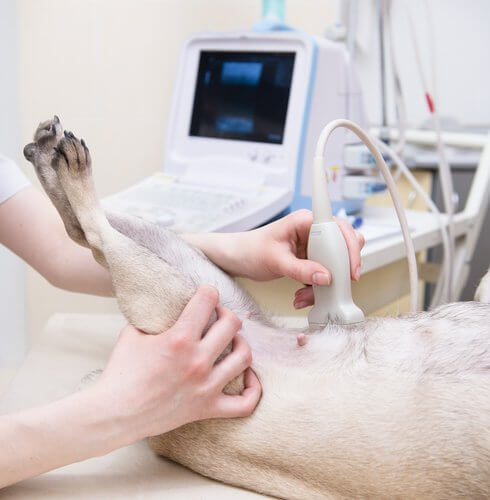When Are Female Dogs Most Fertile?

If you’d love your female dog to have puppies you’ve probably wondered when exactly is the best time for her to mate. This is the article for you! We’re going to talk about when female dogs are most fertile, and how to tell.
Most people already know that heat is when a male dog needs to “mount” the female. What many people don’t know is that female dogs being in heat doesn’t always mean they’re the most fertile. Keep reading to learn how to tell when that is.
How to tell when female dogs are most fertile

The first thing to know is that you can’t mate dogs until both of them are at least 18 months old. With female dogs, you can start as early as their second heat cycle, but it’s best to wait till at least their third because that’s when they’re most fertile.
She still might not always let the male dog mount her, though, which is actually very common. So, it’s very important to know when exactly they’re most fertile to guarantee success.
That time is when they’ve been bleeding for at least two days. It’s the phase when the eggs, and their bodies, are most prepared to receive “guests.” The process could last a week, so it’s also best to wait a couple days until they’re bleeding less, because they’re more receptive then.
If you don’t really understand your dog’s heat cycles, you can also take her to the vet for a cytology test. This will show you her levels of progesterone, which will help you determine exactly when she ovulates. You can go from there and figure out the time she’s most fertile.
So, now that you know when female dogs are most fertile, it might help to know exactly how the mating process works.
How to mate two dogs
It’s natural to want your dog to have puppies, but it’s not always easy to get two dogs to mate, especially if they don’t know each other. So, we’re going to give you some tips to help make sure things go smoothly.

- Choose a good mate for your dog. Ideally, the male will be the same breed and size as your dog. This is about more than just the appearance of the puppies, it’s also better for your dog, and will make it easier for them both. They’ll recognize each other from their breed and that will create a bond.
- Be patient. Don’t expect it to work on the first try. They need to have a “first date” to get to know each other. Do this about a week after your dog has entered heat. It won’t be the most fertile time, but her hormones will still be flowing and meeting the male at that time will make her want to mate with him more when the time comes.
- Bring her to the male. It’s best to bring the female dog to the male. Females can feel threatened in their own territory, but when male dogs smell females they usually let them in.
More tips
- Find a calm environment. Talk to the male’s owners and have them set up a calm room without too much light or noise. This way, both dogs can relax and nature can work its magic.
- Let it be natural. Don’t try to force it, and don’t get in the middle. The dogs have their instincts, and things will happen with or without you. Once they start, leave them alone so they’ll feel comfortable.
- Let it go on as long as it needs to. You might think it’s been long enough, or that your dog is in pain, but don’t stop the process. It usually lasts about 20 minutes, so just be patient. You’ll be a grandparent soon enough!
Looking to the future
Of course, if you succeed in mating your female dog, you’ll need to make sure you know how to take care of her while she’s pregnant. Later on, you’ll also need to learn how to care for the puppies themselves. This is just as important as anything else in the process!
All cited sources were thoroughly reviewed by our team to ensure their quality, reliability, currency, and validity. The bibliography of this article was considered reliable and of academic or scientific accuracy.
- Páramo, R. & Balcázar, J. (2012) Manual de Prácticas de Manejo Reproductivo en Caninos. Universidad Nacional Autónoma del Estado de México. Recuperado el 03 de febrero de 2022, disponible en: https://fmvz.unam.mx/fmvz/licenciatura/coepa/archivos/manuales_2013/Manual%20de%20Practicas%20de%20Profundizacion%20en%20Reproduccion%20Animal%20Perros.pdf
- Beach, F. A., Dunbar, I. F., & Buehler, M. G. (1982). Sexual characteristics of female dogs during successive phases of the ovarian cycle. Hormones and Behavior, 16(4), 414-442.